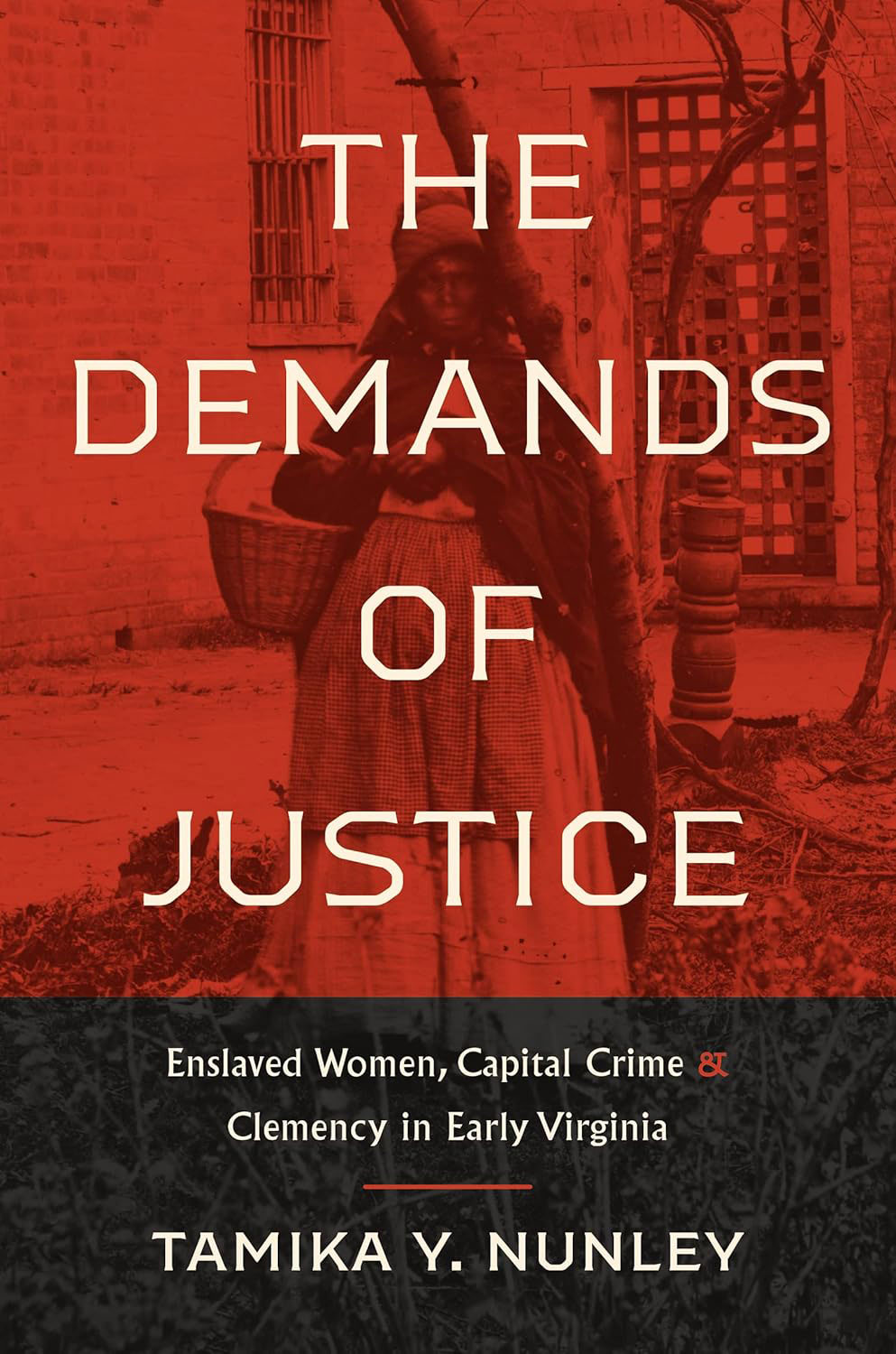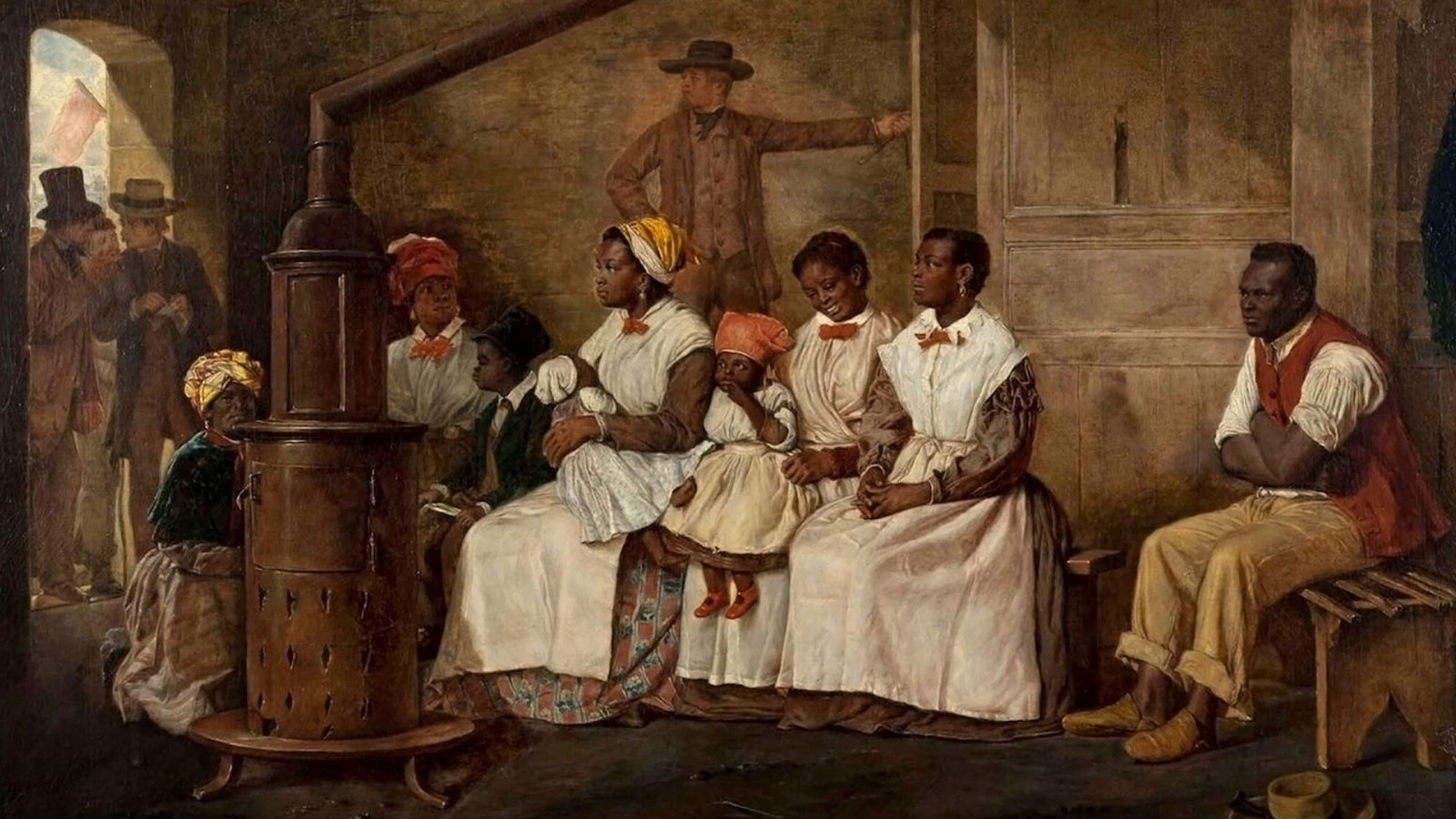In the past decade, scholars of Early America have produced a series of subaltern studies on enslaved women before the law. Books by Jessica Millward and Martha Jones have shown how enslaved women used local courts to flesh out legal standing for Black kinship ties and Black citizenship prior to emancipation. Emily A. Owens’ study of enslaved women and sexual assault in antebellum Louisiana in particular asks us to consider how the slave society that created our legal definition of consent has influenced legal recourse for women today. Tamika Y. Nunley’s The Demands of Justice: Enslaved Women, Capital Crime & Clemency in Early Virginia is the latest addition to this community of ground-breaking legal histories of enslaved women’s resistance to slavery and its gendered violence.
Outside the work of Nunley and the aforementioned scholars, the legal histories of slavery have often focused solely on enslaved women in the shadow of partus sequitur ventrem. Through partus, enslavers in the Americas fixed enslaved status to maternal descent and consequently historians have long flattened enslaved women into purely sexual or reproductive subjects. Far too many monographs portray enslaved women only as rape victims and mothers because it was those two linked experiences which often provoked freedom suits and manumissions. Although scholars specializing in the development of slave codes, such as Philip Schwartz, Thomas D. Morris, Malick Ghachem, and Edward Rugemer, note that enslaved women committed acts of resistance, scholarship is scarce on enslaved women as key criminal and rebellious subjects before American judges.
It is not incidental that the scholars revitalizing the legal history of slavery are predominantly Black women. In a 2021 conversation between Nunley and Jones hosted by Ford’s Theater, Jones responded to a question about the importance of Black women researching legal history, stating that “if there are histories… that haven’t been written it is still on us, isn’t it? To do the work [of uncovering these histories] and to write them.” A historiography still shaped predominantly by white male academics is voluminous in works on slavery, less so on enslaved people. And as Nunley’s book shows, studying enslaved people’s experiences with the law is actually crucial to understanding how it functioned not only institutionally, but also ideologically. Analyzing how enslaved women articulated a “rival jurisprudence” through crime, she uncovers a U.S. slave society much more contested and combustible than what earlier, more institutional, histories of slave law may suggest (6). In acts of infanticide, or poisoning their enslavers, or arson, enslaved women revealed “their own social economy of right and wrong (48).”
In Nunley’s analysis of enslaved women’s alleged capital crimes, she explains how their “criminal” actions were physical expressions of their ideas about the law and one’s rights. By investigating why and how enslaved women poisoned their enslaver, or committed infanticide, she reframes Virginian court records as an archive of Black women’s “alternative epistemologies of justice (112).” Indeed, her main source base is quite a grim collection: papers in the Auditor of Public Accounts which reimbursed enslavers for the state’s execution or transportation of their bondpeople. Nunley turns these records on their head. Rather than present them as evidence of the state’s power, Nunley introduces the collection of court orders and ‘property’ appraisals to her readers as the biographies of enslaved women who “created their own avenues of recourse” through crime (131).

The Demands of Justice – Tamika Y. Nunley
Enslaved women’s capital trials ultimately shook loose the façade of paternalism and white unity Virginia enslavers sought to perform in slave codes. Death sentences sparked petitions for clemency from local whites who alluded to the violences condemned women had previously faced back on the plantation. Legislators who were outraged by courts that ordered transportation rather than death were forced to admit that the system of white supremacy survived through repression alone. During the trials, enslaved defendants such as Letty in 1822 testified to infanticide as retribution for rape, saying “if the child had been one of her own colour, she would not have done as she did (123).” Enslaved women such as Nelly in 1856 admitted to murdering their enslavers because, in her words, “he was a hard master (88).” Women like Milly in 1798 used arson and assault as their only recourse against the violent whims of their enslavers (47). In all of these ways, Black women’s “intimate ruptures” with their own enslavers “spilled out” into newspapers and legislative halls, forcing white Virginians to discuss slavery as a political problem (86).
Nunley repeatedly returns to clemency as an act which reveals the nature of slavery in Virginia. For one, the reduced sentence in question – transportation – fused Virginia’s state with its economy: the nation’s chief wholesaler to slave markets. Virginians spoke of the transportations which fused racial control and capitalism as “judgments of mercy” which demonstrated the paternalist “moral cachet” of their system (17). Yet, the fact that both court sentences and their commutations were so unpredictable shows how patchwork Virginia’s system of racialized slavery remained until the end. Governors granted or denied clemency based on political winds. Local courts decided arbitrarily whether the youth of an enslaved defendant or the weakness of evidence was enough to mitigate their sentence to non-capital punishment. Overall, the book shows officials deploying clemency strategically to simmer irreconcilable tensions in their (and even today our) unjust society.
Indeed, Nunley concludes her book with a question: “What limits and demands of justice remain (189)?” In some ways this struck me as an encapsulation of Saidiya Hartman’s note that “Black lives are still imperiled and devalued by a racial calculus and a political arithmetic that were entrenched centuries ago. This is the afterlife of slavery.” The Demands of Justice likewise leaves us with police brutality against Black women as the detritus of a system never fully swept away.
Yet, Nunley’s book also contains a sense of hope that frames the resistance of enslaved women as an intellectual heritage. Enslaved women’s acts of refusal, while often consigning them to death, revealed a supposedly natural order to be in constant crisis, always fraying in one corner or another. Enslaved women’s crime showed that the system never constituted cultural hegemony. Instead, enslaved women helped develop a higher order of justice grounded in freedom, bodily autonomy, and kinship. The victories for that higher order are few in this nation, but they have and will come.
Source: AAIHS
Featured image: “Slaves Waiting for Sale,” 1861 (Eyre Crowe, Wikimedia Commons).















